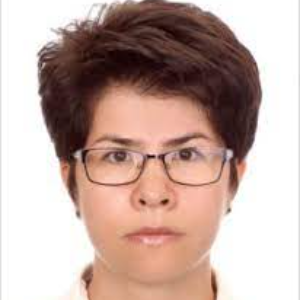Abstract:
Rare-earth orthoniobates are compounds with high stability in H2O- and CO2-containing atmospheres and perspective proton conductivity can be used as promising materials for creating membranes, fuel cells, etc. Many efforts have been made to improve the conductivity of orthoniobates by doping in A- and B- sublattice. Another way to increase the conductivity and stability of proton-conducting membrane materials is the creation of nanocomposites containing both complex oxides and metals or alloys. Introduction metal component into the composite provides mechanical strength high electronic conductivity which to avoid permeation limiting by coupled electron-proton transport across the membrane.
Lanthanum orthoniobates , alloys (Ni-Co, Ni-Cu, Co-Cu, Ni-Cu-Ag) and nanocomposites were synthesized by the solvothermal method in an alcohol medium. The synthesis was carried in a flow reactor out at parameters exceeding the critical ones for isopropanol. For the first time, La0.99?a0.01NbO4–δ and nanocomposites with NiCu and NiCo nanoparticles were synthesized using alcohol solutions of salts of the corresponding metals. This method allows us to obtain single-phase complex oxides of La0.99?a0.01NbO4–δ . Nanocomposites were obtained by two methods: one-pot synthesis and mechanical mixing of the oxides in isopropanol with surfactants.
Calcined powders and gastight pellets of orthoniobates and nanocomposites were characterized by X-ray phase analysis, SEM, TEM. Transport characteristics were investigated by Van der Pauw techniques varying measurements temperature in wet ?2 atmosphere. High-density ceramics by sintering of powders at 1100 ?C using the hot pressure technique were developed and nanocomposite show high electronic and ionic conductivity. Their total electrical conductivity is high, up to 10−3 S/cm.
What will audience learn from your presentation?
Listeners will learn about the universal, environmentally friendly method of obtaining various types of materials.
Biography:
Dr. Bespalko graduated as MS in 2002 Chemical Faculty of Tomsk State University. Then she joined the research group o Prof. Sadykov at the Laboratory of Catalysts of Deep Oxidation, Boreskov Institute of Catalysis, Russia. She received her PhD degree in chemistry (kinetics and catalysis) in 2008 at the same institution. Now she continues to work in Boreskov Institute of Catalysis and since 2021 teaching at the Faculty of Physics at Novosibirsk State University. She has published more than 60 research articles in SCI(E) journals. She is the member of American Ceramic Society.


